Virtual production has revolutionized the filmmaking industry, providing a seamless integration of real-world elements and digital environments. With virtual production techniques, filmmakers can create stunning visuals and immersive experiences while optimizing production efficiency. By combining real-time rendering, advanced motion capture, and cutting-edge technologies, virtual production has become a powerful tool for bringing imaginative worlds to life.
One of the key aspects of virtual production is its real-time rendering capabilities. With this technology, filmmakers can visualize complex scenes and environments in real time, reducing the need for extensive post-production work. The ability to see the final result immediately allows for better decision-making during the production process, enhancing creativity and efficiency.
Virtual cameras play a crucial role in virtual production, enabling filmmakers to capture virtual environments from different perspectives. These cameras can be synchronized with physical cameras, offering greater creative freedom and flexibility during shooting. By seamlessly blending virtual and physical elements, filmmakers can achieve a level of visual coherence that was previously challenging to accomplish.
Motion capture technology has greatly advanced in virtual production, allowing actors to perform in real time while their movements are simultaneously recorded and applied to virtual characters. This capability has revolutionized the way performances are captured, resulting in more natural and nuanced character animations. With the ability to visualize and fine-tune performances on the spot, virtual production has transformed the traditional methods of filmmaking.
The integration of LED walls and virtual sets has brought about a new level of immersion in virtual production. These setups involve large LED screens that display virtual backgrounds and environments in real time. By using camera tracking and real-time rendering, filmmakers can capture actors and objects in front of these screens, creating a seamless interaction between the real and virtual worlds. This technology has not only enhanced the visual quality but also improved the actors’ performances by providing them with realistic environments to work in.
Lighting integration has also seen significant improvements in virtual production. Virtual environments can now accurately simulate real-world lighting conditions, allowing for the seamless integration of virtual and physical elements. This advancement has resulted in a more cohesive and visually appealing final product. By having precise control over lighting effects in real-time, filmmakers can enhance the overall realism and immersion of virtual scenes.
Moreover, virtual production techniques have gained widespread adoption in the film and television industry. Major film franchises have embraced virtual production as a primary method of filmmaking. Its benefits include cost savings, increased efficiency, and the ability to visualize complex scenes before shooting. This technology has not only transformed the way films are made but has also opened up new opportunities for smaller-scale productions and independent filmmakers to utilize these advanced techniques.
In conclusion, virtual production has significantly evolved over the past years, enabling filmmakers to create visually stunning and immersive experiences. With real-time rendering, virtual cameras, motion capture, LED walls, and improved lighting integration, virtual production has pushed the boundaries of storytelling and filmmaking. As technology continues to advance, we can expect virtual production to become an even more integral part of the entertainment industry, offering limitless creative possibilities for filmmakers worldwide.
Over the past 10 years, virtual production has undergone significant advancements and updates, transforming the way films, television shows, and other forms of media are produced.
Table of Contents
Here are some notable developments in virtual production during this period:
1. Real-time Rendering
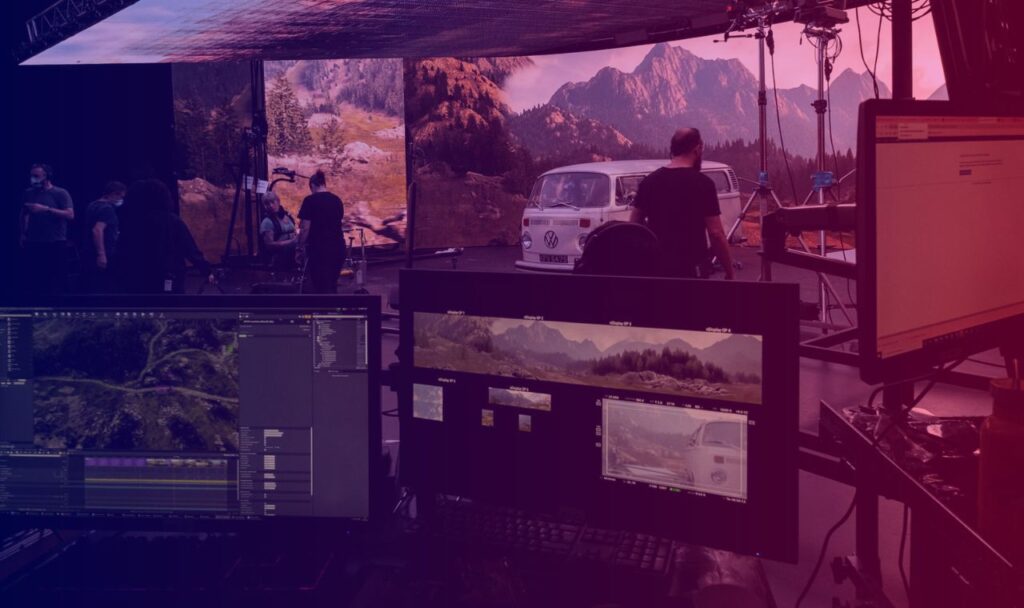
Virtual production is a cutting-edge technique that leverages real-time rendering technology to seamlessly merge virtual and physical elements within live or recorded environments. With significant advancements in real-time rendering, it has become easier than ever to visualize intricate scenes and environments without the need for extensive post-production work. This innovative approach allows filmmakers, game developers, and content creators to have a more immersive and interactive production experience.
By harnessing the power of real-time rendering, virtual production enables a more efficient and streamlined production process. It allows directors and cinematographers to see virtual elements, such as CG characters or visual effects, in real-time, making it easier to make creative decisions on the spot. This technology also provides an opportunity for actors to interact with virtual environments or characters, enhancing their performances and the overall realism of the final product. Moreover, the ability to visualize complex scenes in real-time reduces the need for costly and time-consuming post-production adjustments, ultimately saving both time and resources.
In addition to its benefits in traditional film and television production, virtual production has also gained traction in the gaming industry. Real-time rendering allows game developers to create highly detailed and immersive environments that can be experienced in real-time by players. This technology empowers game designers to iterate and refine their creations more efficiently, resulting in higher-quality games with captivating visuals and enhanced player experiences. Whether in film, television, or gaming, virtual production and real-time rendering technology are revolutionizing the way content is created, pushing the boundaries of what is possible in the realm of visual storytelling.
2. Virtual Cameras
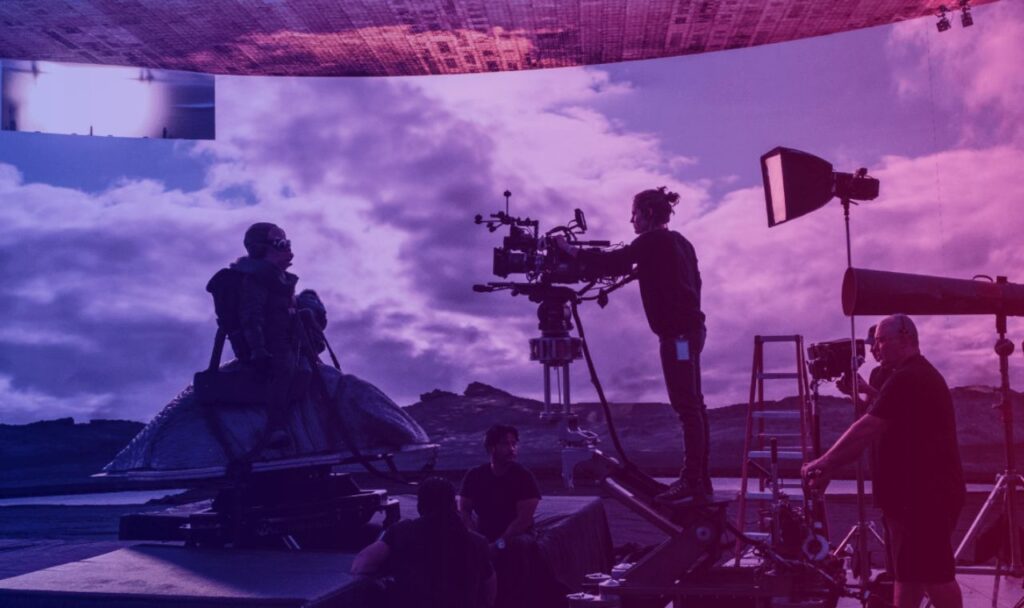
Virtual production has ushered in a new era of creativity with the advancement of virtual cameras. These sophisticated tools allow filmmakers to capture virtual environments from various perspectives, providing a level of freedom and flexibility that was previously unimaginable. Virtual cameras can be seamlessly synchronized with the movements of physical cameras, enabling directors to explore different angles, compositions, and camera movements in real-time.
With virtual cameras, filmmakers can step into the virtual world and interact with their scenes as if they were on set. This immersive experience empowers directors to make instant adjustments, experiment with different camera setups, and find the perfect shot without the limitations of traditional production methods. The synchronization between virtual and physical cameras allows for a seamless integration of live-action footage and virtual elements, resulting in a more cohesive and visually stunning final product.
Moreover, virtual cameras offer tremendous cost and time-saving advantages. They eliminate the need for extensive location scouting, physical set construction, and costly equipment setups. Instead, virtual environments can be created digitally, giving filmmakers the freedom to craft any setting they desire. This versatility not only opens up creative possibilities but also allows for more efficient production workflows, reducing both production expenses and post-production efforts.
3. Motion Capture
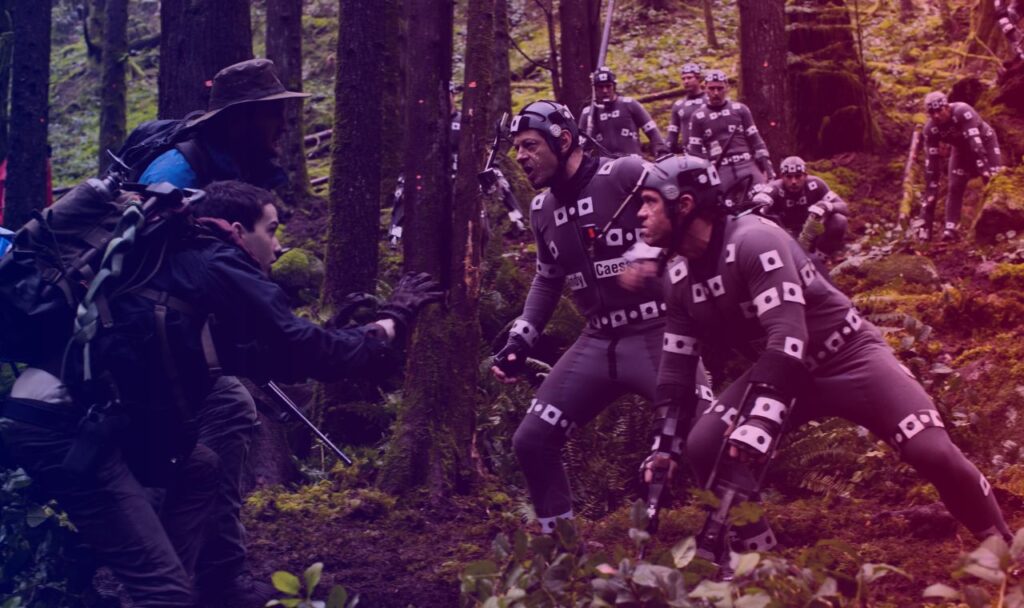
In the realm of virtual production, motion capture technology has witnessed significant advancements, becoming more advanced and accessible than ever before. This technology enables actors to perform in real-time while their movements are simultaneously recorded and applied to virtual characters. This integration of live performances into virtual environments has revolutionized the creation of realistic and nuanced performances.
Motion capture technology captures the subtle nuances of an actor’s movements, translating them into the movements of virtual characters in real-time. This level of realism adds authenticity and depth to the virtual world, enhancing the overall immersion for viewers. Actors can embody their characters and bring them to life, delivering performances that seamlessly blend with the virtual elements surrounding them.
The real-time aspect of motion capture allows directors and filmmakers to make immediate creative decisions, adjusting performances on the fly. This immediate feedback loop enables actors to react and respond to the virtual environment in real-time, fostering a more natural and dynamic performance. Additionally, the synchronization between live performances and virtual characters reduces the need for extensive post-production work, as the captured motions can be directly applied to the digital characters, resulting in a more efficient production process.
4. LED Walls and Virtual sets
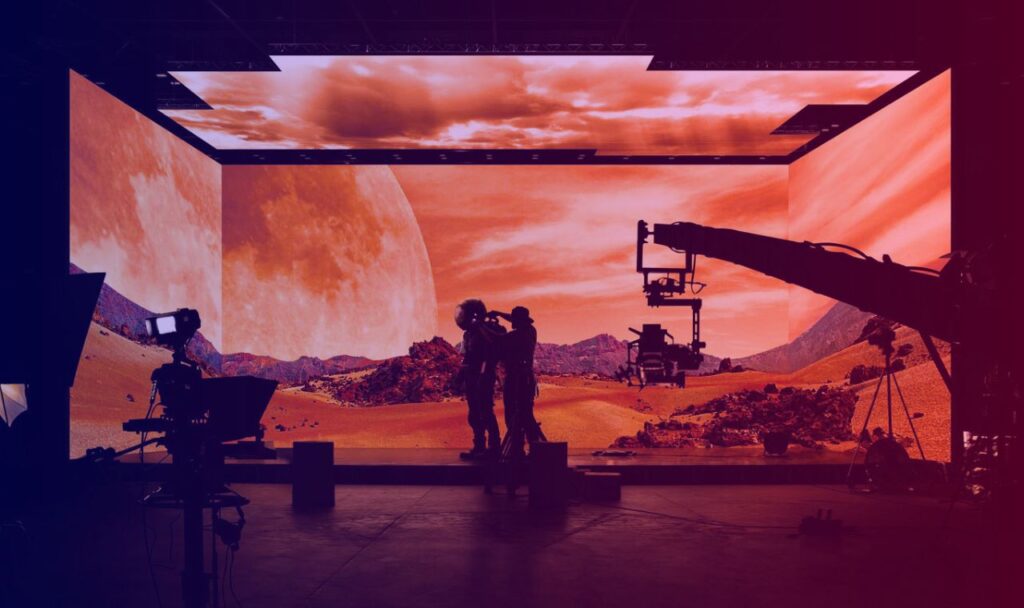
The emergence of LED walls and virtual sets has brought about a paradigm shift in the world of filmmaking. These innovative setups involve the use of large LED screens that display virtual backgrounds and environments in real-time. By employing camera tracking and real-time rendering technologies, filmmakers can capture actors and objects in front of these screens, creating highly immersive and realistic scenes that blend live-action performances with virtual elements seamlessly.
LED walls and virtual sets offer numerous advantages to filmmakers. Firstly, they provide a tangible environment for actors to interact with, enhancing their performances and enabling more authentic reactions. Instead of relying solely on green screens and imagination, actors can physically see and respond to the virtual surroundings, resulting in more convincing and emotionally engaging performances. This technology also facilitates better lighting integration, as the virtual environments displayed on the LED walls can emit light that interacts realistically with the actors and objects in the scene.
Moreover, the use of LED walls and virtual sets reduces the reliance on costly and time-consuming on-location shoots. Filmmakers can create and switch between various virtual environments efficiently, eliminating the need for extensive travel, set construction, and logistical challenges. This versatility allows for greater creative freedom and flexibility, as different scenes and settings can be achieved with a few adjustments to the virtual set. The real-time rendering capabilities further streamline the production process, as filmmakers can see the final result on set, minimizing the need for extensive post-production work.
5. Improved Lighting Integration
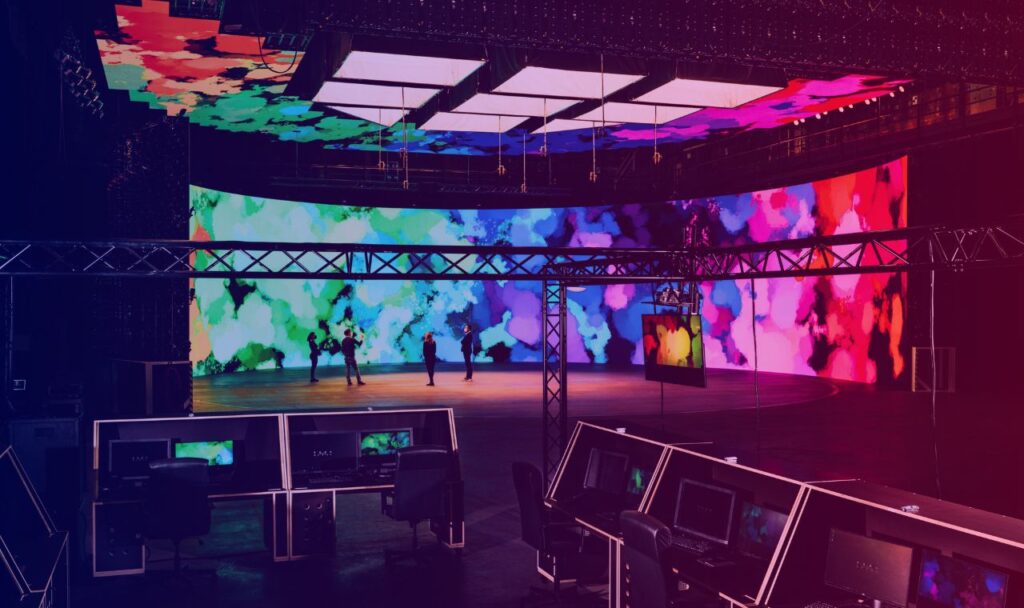
Virtual production has made remarkable strides in improving lighting integration, revolutionizing the way virtual and physical elements merge seamlessly. With the advancements in virtual environments, it is now possible to accurately simulate real-world lighting conditions, resulting in a heightened level of visual quality and realism. This breakthrough in lighting integration has elevated the overall production value of virtual content.
By replicating real-world lighting scenarios, virtual production enables filmmakers to achieve consistent and convincing lighting effects. The virtual environments can accurately mimic sunlight, shadows, and reflections, creating a harmonious blend between the virtual and physical elements on screen. This level of accuracy in lighting integration enhances the believability of virtual scenes, making them indistinguishable from their real-world counterparts.
Moreover, the improved lighting integration in virtual production offers filmmakers greater creative control and flexibility. Lighting setups can be adjusted in real-time within the virtual environment, allowing for instant experimentation and refinement. This capability empowers directors and cinematographers to fine-tune the lighting to evoke specific moods, enhance storytelling, and highlight important visual elements. The ability to manipulate lighting on the fly adds a new layer of artistic expression and efficiency to the virtual production process.
6. Expanded use in film and TV

Virtual production techniques have experienced a significant surge in popularity within the film and television industry, with widespread adoption by major studios and productions. Notably, acclaimed franchises like “The Mandalorian” and the highly anticipated “Avatar 2” have embraced virtual production as a primary method of filmmaking. The advantages offered by virtual production have contributed to its increasing prominence, including cost savings, improved efficiency, and enhanced visualization capabilities.
One of the key benefits of virtual production is the potential for significant cost savings. By utilizing virtual environments and assets, productions can reduce the expenses associated with on-location shoots, physical set construction, and extensive post-production work. The ability to create and manipulate virtual sets and backgrounds allows for more efficient use of resources, streamlining the overall production process and optimizing budget allocation.
Furthermore, virtual production enables increased efficiency by providing real-time feedback and visualization of complex scenes. Filmmakers can preview and fine-tune their shots before filming, allowing for better planning and coordination of resources. This reduces the need for costly reshoots or extensive post-production adjustments, resulting in a more streamlined and time-efficient workflow. The ability to iterate and experiment in a virtual environment empowers directors and cinematographers to achieve their creative vision with greater precision and confidence.
7. Broader accessibility
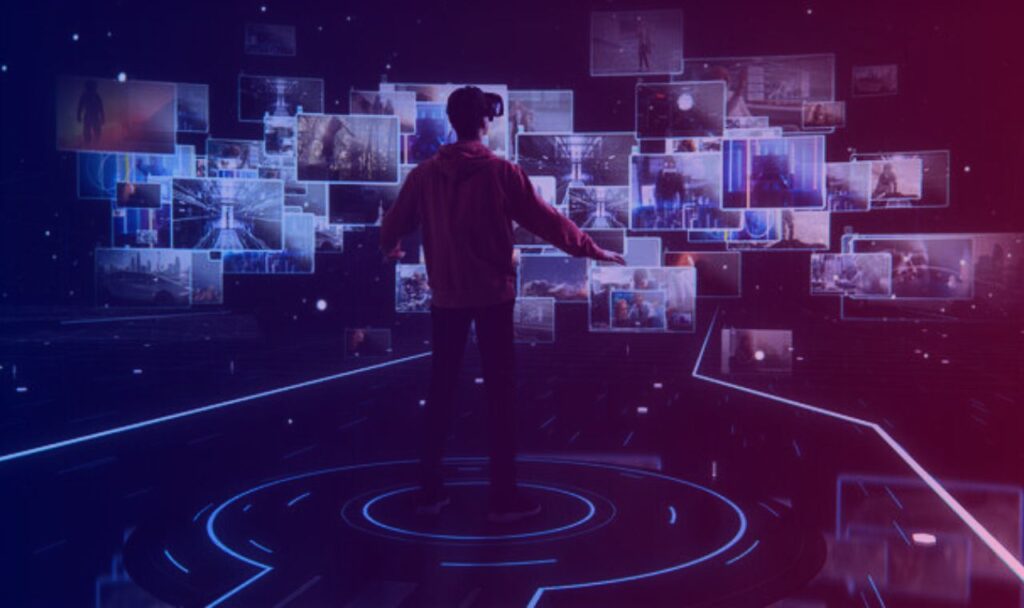
Virtual production has become increasingly accessible to filmmakers and content creators of all scales, thanks to advancements in virtual production tools and technologies. What was once reserved for big-budget productions is now within reach for smaller-scale projects and independent filmmakers. The decreasing costs associated with virtual production have opened up new opportunities for a broader range of creators to explore and utilize these innovative techniques.
The accessibility of virtual production tools and technologies has leveled the playing field, allowing filmmakers with limited resources to create high-quality visual experiences. The availability of affordable software, hardware, and virtual production equipment has made it more feasible for independent filmmakers to incorporate virtual elements into their projects. This democratization of virtual production has enabled a wider range of voices and stories to be told in immersive and visually captivating ways.
Furthermore, the accessibility of virtual production has fostered a collaborative and inclusive creative environment. As virtual production tools become more user-friendly and intuitive, filmmakers with diverse backgrounds and skill sets can easily embrace and experiment with these techniques. This accessibility encourages creative exploration and innovation, allowing for unique storytelling approaches that may not have been feasible before.

